When you purchase through links on our website, we may earn a commission. Affiliate disclosure.
In this Bafang hub motor review, I look at this high-performing and reliable electric bike hub motor. It’s relatively cheap while offering a significant boost in performance for day-to-day riding. This makes it a popular choice among DIY e-bike builders and manufacturers. In this article, I will examine its features, benefits, and drawbacks based on six years of experience with this motor. Find out more about my electric bike conversion service.
Since this article was posted four years ago, Bafang has been very busy! Their hub motors are now found on nearly 70 well-known brands and many lesser-known brands. In addition, the Bafang hub motor range now includes 12 rear motors and three front hub motors covering multiple uses from electric cargo bikes, city bikes and fat tyre e-bike applications.
Key features
- Various power options are available from 250w – 1000w
- Fitment for standard or fat bike wheels
- Supports torque-sensing controller and bottom bracket
- Available in 36v or 48v (will handle up to 52v)
- Available in kit form or as OEM motor on factory e-bikes
- Price: From £250 to £450 depending on the supplier ($300 – $500 approx)
Pros and cons of the Bafang hub motor
Pros
- High torque and efficiency: The Bafang uses a brushless motor with planetary gears. Small geared hub motors produce more torque than direct-drive motors, making them better for climbing hills. They are also much easier to pedal with the power switched off, making them much more suitable for someone who only needs the assist on hills.
- Ease of installation: If you’re fitting the Bafang as part of an e-bike conversion kit, it’s relatively easy to install. The motor kits usually come with all the necessary hardware and instructions, making it a straightforward process even for those without much mechanical experience. Additionally, the motors are available in various wheel sizes, so you should be able to find the right one for your bike.
- Cassette and freewheel gear options: There are two options for gearing – one will take the old-style screw-on freewheel (usually 6 or 7-speed), and the other will take a mountain bike cassette of 8 to 11-speed. The cassette version will not take a road 11-speed (like Shimano 105), as spacing is different and requires a slightly wider freehub.
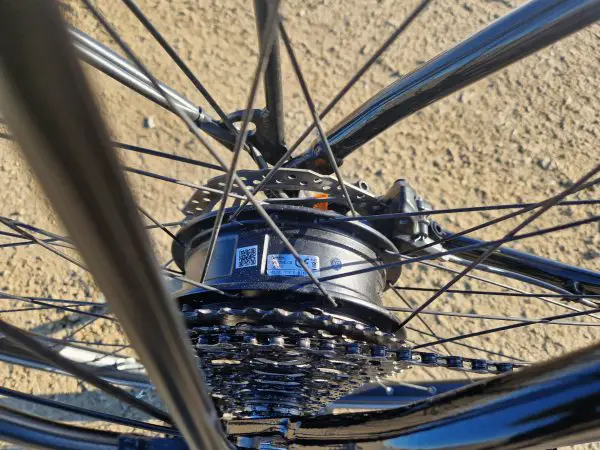
Cons
- Weight: While the Bafang hub motor has many benefits, it has some drawbacks. One of the biggest drawbacks is weight. Although it’s now much lighter than previous incarnations, it still comes in at nearly 3 kg at the lower end.
- Not compatible with modern thru-axles: Another drawback of the Bafang hub motor is it’s only currently available for quick-release dropouts. With an increasing amount of new mountain bikes using thru-axles and boost rear hub spacing. If they want to stay ahead of the game, Bafang must offer this option for DIY e-bike builders.
- Premature motor wear: Reliability is generally good, but as with all electric motors, there can be problems from time to time. I have personally experienced hall sensor failure and premature wear of the nylon planetary gear. If you did experience problems down the line, parts are readily available, and the motor is easy to service for a competent DIY enthusiast.
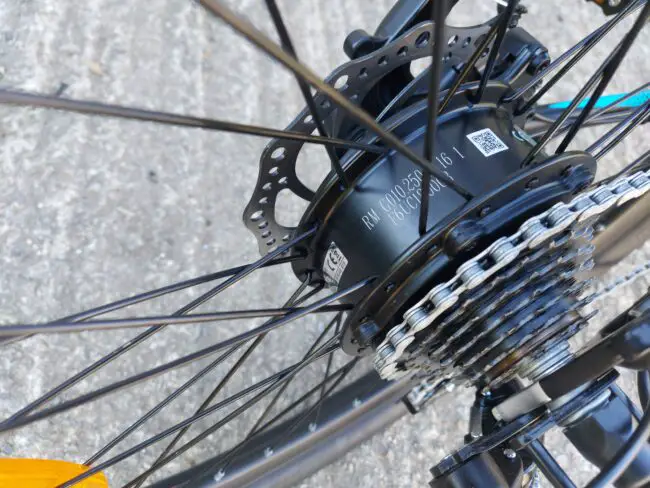
Motor performance: 250w variant
I’ve owned several e-bikes with this motor. Indeed, my latest electric bike uses a 250w Bafang motor. In my experience, Bafang hub motors offer solid performance, from the 250w version right through to the 750w version.
The 250w Bafang hub motor is usually used in conjunction with a 36-volt 15-amp controller. This will give a peak power output (under load) of 540 watts. Peak output will depend on other firmware settings specific to the controller used. In addition, if a 48-volt controller is used, then peak power will be substantially more. I’ve ridden a road-legal e-bike with 48v Bafang 250w, and peak power was showing (on the display) at over 700 watts.
It seems the continuous motor rating (250w) is important for legality, but higher power outputs when under load are acceptable. The Bosch CX motor produces a peak power of around 600 watts.
Bafang offers a torque-sensing option – for OEM only, and unfortunately, not in conversion kits. The new Eskute Polluno Plus has this configuration, and it works well. The torque-sensor unit is housed inside a Bafang-branded bottom bracket. This system works incredibly well – it provides instantaneous electric assist the second you start to pedal. The torque sensor measures the pedalling force and adjusts the motor output accordingly. This drastically improves efficiency and riding experience.
Find out more about the pros and cons of a hub motor vs a mid-drive motor.
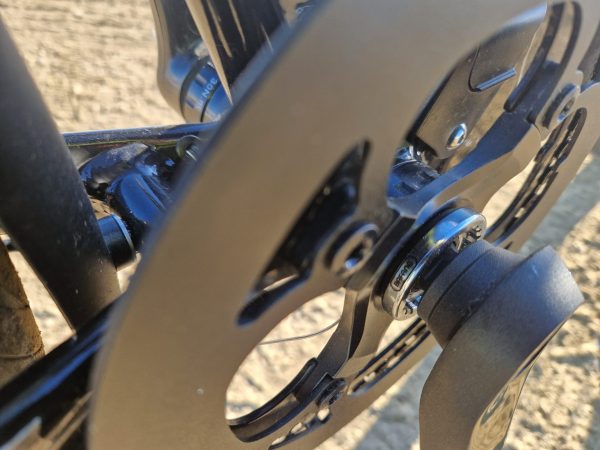
The other option is a cadence sensor – this is found on budget factory electric bikes like the Eskute Voyager, and Bafang e-bike conversion kits. The newer cadence sensor is an enclosed unit that slots into the splines on the bottom bracket. This kind of pedal assist has a much more on / off feel to it – you can ghost pedal (spinning the pedals without effort in a low gear), and you’ll still get assist. Controller firmware is usually programmed so that when a higher cadence is reached, the motor current is dialled back.
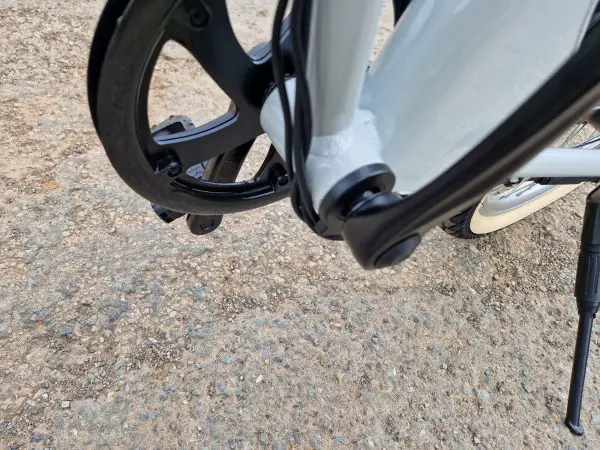
A 250w Bafang hub motor has enough power to comfortably get you up a 10% climb. But, steeper hills will require additional effort from the rider. The gearing on the bike will also be a contributing factor when negotiating steep hills – lower gearing = easier hill climbing.
For a 250-watt hub motor, the Bafang performs very well and will provide enough pedal assistance for most riders. Its limitations are only noticeable on very steep hills, but for moderate hills, it does the job.
Motor performance: 750w variant
The 750-watt Bafang hub motor tested here was fitted to a Cyrusher XF800 fat tyre e-bike. This motor is used in conjunction with a 48-volt 25-amp controller, giving a peak power of 1200 watts. When the battery is fully charged @54.4-volts, peak power will top out at 1360 watts.
Considering the heavy weight of this electric bike (32 kg), the performance of the motor is impressive. The cadence pedal assist sensor delivers a smooth, but strong surge in power. The power builds rapidly and pulls strongly up to 28 mph.
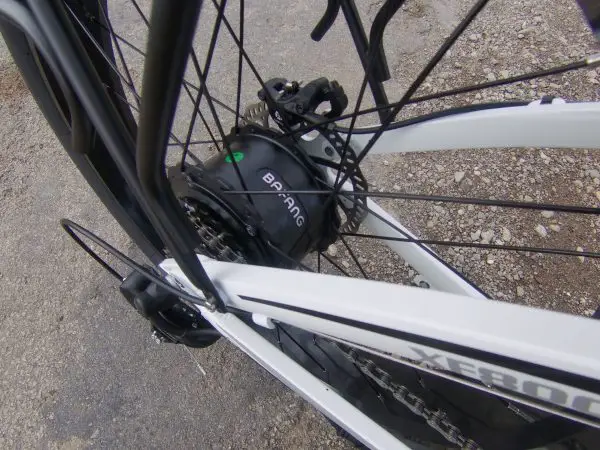
This motor is noticeably noisier than its smaller sibling, but the noise is never intrusive. I tested this particular bike on a couple of very steep climbs with a maximum gradient of around 20%. Although the motor did start to struggle a little on the steepest section, it still got me up there without me getting out of breath.
Where the 750-watt Bafang comes into its own, is on rolling terrain with moderate hills – you can cover ground fast, and it’s not too difficult to keep the average speed above 20 mph.
What’s included in a Bafang e-bike conversion kit
- Front or rear hub motor laced into a rim
- The motor controller (the electronic brain of the system)
- LCD or LED display – for speed, battery range, etc.
- Wiring harness
- Pedal assist sensor
- Brakes with integrated sensors (for mechanical brakes)
I’ve installed, both the 250-watt and 500-watt versions of the Bafang e-bike conversion kit. These kits are a great way to give old, unloved bikes a new lease of life.
Compatibility
Before buying one of these kits, you’ll need to check the wheel size of your bike. If you do not know the size, it can be found on the side of the tire, for example, 26″ / 599 (ISO) 27.5 / 584 (ISO) 28″ / 622 (ISO) – PLEASE NOTE: If you are installing this kit on a 29er mountain bike, then you will require the 28″ (622) wheel size. For more information on tyre and wheel sizes, check out this tyre and wheel sizing article by the great Sheldon Brown.
These motor kits are only compatible with standard rear drop-outs (135mm wide). They will not fit bikes with thru-axles. Nearly all cheaper bikes have standard quick-release dropouts. But if you are considering installing this kit on a higher-end mountain bike or road bike, you must double-check. The fat bike version of these kits will be compatible with the wider 175mm dropouts of those bikes.
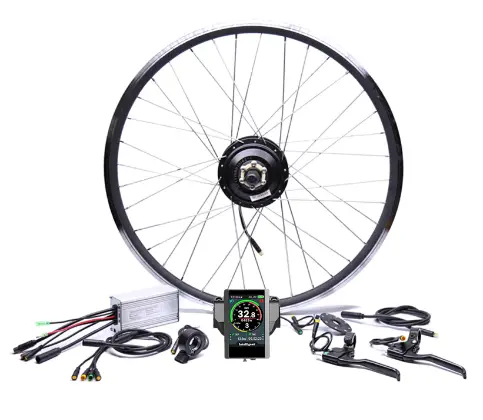
Finally, You will need to check the kind of bottom bracket your bike has fitted. If it is a standard square-tapered BB, then the pedal sensor should fit. If, however, you have an Octalink / ISIS or Hollowtech ll type BB, then you will need to purchase a separate pedal assist sensor.
If your bike has flat handlebars with mechanical rim or disc brakes, the supplied brake levers with cut-off sensors will be a straight swap. Unless you have integrated gear shifters and brake levers, you have hydraulic brakes, or you have drop handlebar (STi) shifters.
Installation
Installing a Bafang hub motor conversion kit is straightforward, and requires minimal skill – it should take roughly 2-3 hours to complete the job. It should be noted that you will require a basic bicycle maintenance tool kit to do the job properly. Things like a crank puller are essential to remove the right side pedal crank to fit the pedal assist sensor.
The installation process involves removing your existing wheel and swapping over your rim tape, inner tube, tire and any other components like disc brake rotor and gear cassette/freewheel. You install the motorised wheel and fit the other ancillary components like the pedal sensor, display and battery. Plug everything in, and away you go!
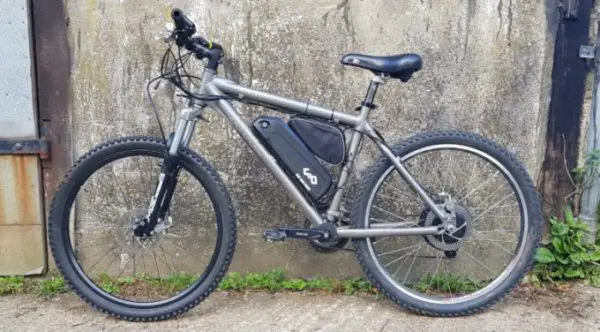
Conclusion
Overall, the Bafang hub motor is one of the best available. They are generally durable, and fairly weatherproof. Out of the dozens of kits I’ve installed over the years, there have been very few long-term issues. One of the big benefits of fitting a Bafang hub motor over a mid-drive is there’s hardly any pedalling resistance. Plus, fewer internal parts to go wrong.
From the perspective of an e-bike buyer, thinking of purchasing a factory electric bike with a Bafang motor, I can highly recommend it. Out of all the e-bikes I’ve tested over the last few years. I can’t think of a single time, a Bafang has given me cause for concern. That’s not to say problems don’t arise from time to time, but my personal experiences with this motor have been positive. Even in 250-watt form, it produces a good turn of speed and a very useful boost on hills. If you are regularly riding very steep hills, I would stick with a mid-drive.
The 750-watt version is a joy to ride and a great mile-muncher! Fit a 52-volt battery with a 25-amp controller, and you will have peak power approaching 1500 watts – this is the maximum recommended output for this motor, and you shouldn’t go beyond that.
All in all, the Bafang hub motor is a great choice whether you’re thinking of converting a bike or buying a factory e-bike.
Thanks for reading my Bafang hub motor review. If you have any questions, please feel free to leave a message in the comments section below – I aim to answer all queries within 24hrs.
Specifications
The specifications below cover the whole spectrum of Bafang hub motors, ranging from their e-city range to their e-cargo and e-MTB motors. Most e-bike conversion kits that use the Bafang motor will be the standard G20 model.
| Motor Fitment | Front or Rear Hub Motor |
| Motor Power | 250w – 1000w |
| Motor Voltage | 36-volt or 48-volt |
| Motor Torque | 35Nm to 95Nm |
| Compatibility | Quick-release dropouts |
| Dropout Width | 100mm (front) – 135mm (rear) 175mm (fat tire bike) |
| Motor Weight | 2.75 kg – 4.5 kg (approximate) |

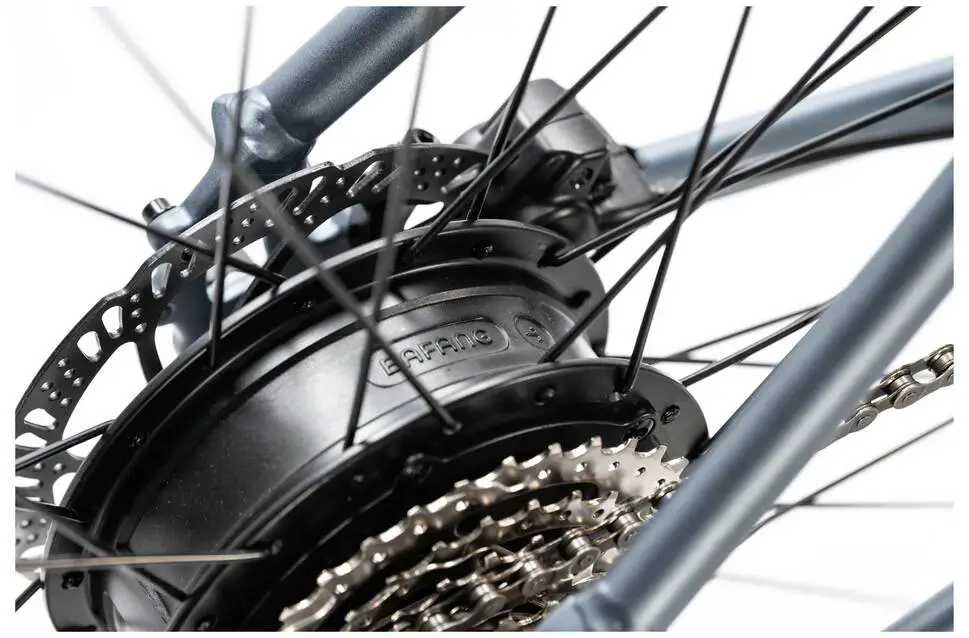
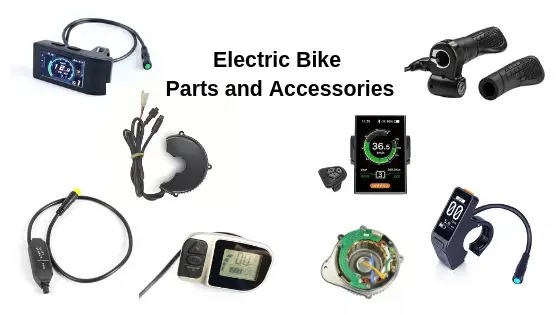
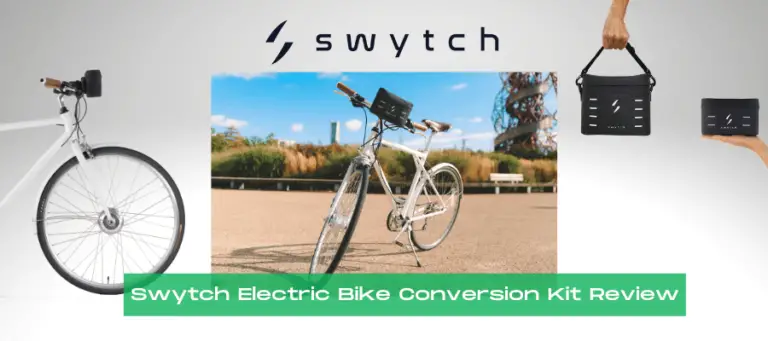
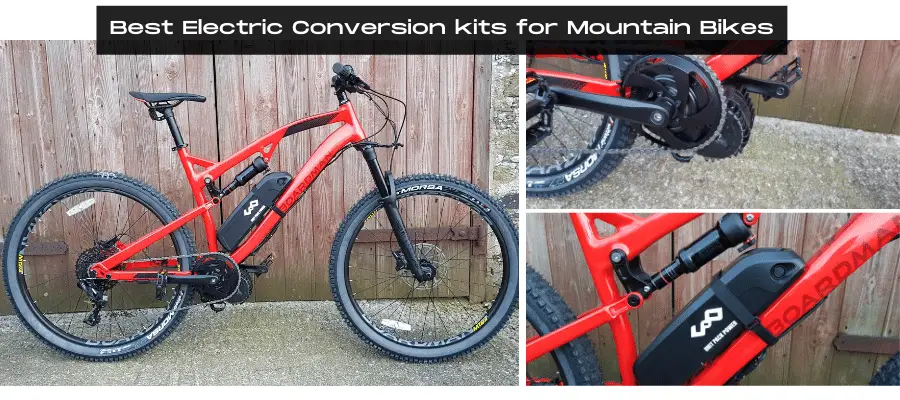
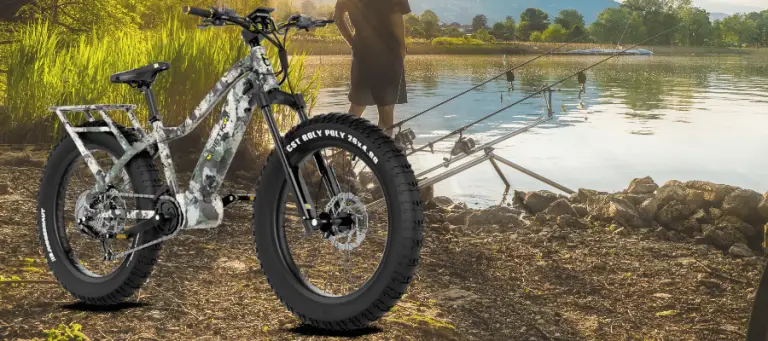
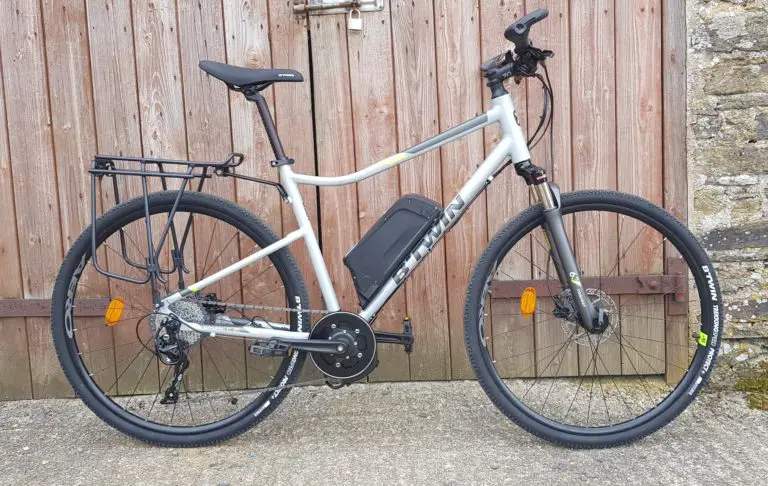
![Accolmile Electric Bikes [Range Overview and Specifications] 7 Accolmile Electric Bikes [Range Overview and Specifications]](https://www.ebikechoices.com/wp-content/uploads/2022/03/Accolmile-electric-bikes-768x341.png)
content de vous connaitre jai un bicycle de marque treck cassette 9 frein ordinaire pneu 28 mais pas sur jaimerai le convertir et quil reste pareil que me conseiller vl;ous cest pour la promenade et beaucoup de cote a monter
Bonjour Tony,
J’ai un kit display Lcd / batterie 48v,660watt, contrôleur intégré à la batterie 22A/Mxus, j’ai brûlé le moteur 500w en voulant à tout prix monter une côte de 22%, acheter chez QBBIKES, (disparu), j’ai acheter en remplacement un kit Bafang, 500w, dont je n’ai monté que la roue avec le moteur, cela pose-t-il un problème de n’utiliser que le moteur ??
merci d’avance
Bonjour,
Oui, vous pouvez utiliser un contrôleur 22A avec un moteur de moyeu Bafang 48v. La puissance maximale de sécurité est d’environ 1500 watts.
Hi Tony,
Do you use a torque arm with the 48V 500 watt hub motor on let’s a Rockrider 520? Do you never use torque arms below 500W? Or only in aluminium frames? Or do you use them? And do you use 2 or just 1?
Hi Giel,
I recommended using torque arms, just to be on the safe side. I usually only use one torque arm. I think its wise to fit them on all hub motor conversions. In the early days I didn’t always fit them, and I never had any issues. But nowadays I always fit them.
Hi Tony
Is it possible to fit a colour display such as the 850c or DPC 18 to a hub motor (and controller) or are these displays purely for a mid drive unit?
Thanks
Hi John,
It is possible, there are some sellers on Aliexpress that sell Bafang hub motors with the 850c display. I think for this to work you need to purchase the controller with display. Here is a link to one of the suppliers I use. If you browse their store, i’m fairly sure they do the 850c display / controller combo.
If you need any more advice, let me know.
Cheers,
Tony
Hi Tony.
I have a 250w hubmotor 36 V and I need more power do you think that I could change it to a 500w and it would increase torque?
Thanks for your answer
Hi Filip,
In theory, you could just change the motor controller to one that can handle a higher current – e.g 36v 20A. The 36v 250w Bafang hub motor should be able to comfortably run at 500w all day, without compromising reliability. You would need a controller with compatible connectors. Most Bafang hub motors use circular ‘Higo’ type connectors.
You should see a marginal increase in torque, by either doing the above, or fitting a completely new 500w motor kit.
Regards,
Tony
Hi Tony,
I want to use a bike frame bag to house the controller, do you have some recommandations on small bags for the controller? And do you have some aliexpress links, so I can order them, thanks in advance.
Hi Giel,
There are a few different options available you can use a standard frame bag like this one or you can use one specifically made for ebike controllers. The RockBros one is well-made, but you will need to make a slit in the underside of the bag in order to thread the leads through.
Both bags are big enough to house a 36v22A controller. If you need a larger bag suitable for a 48v-60v controller – This one would be more suitable.
I hope this helps.
All the best,
Tony